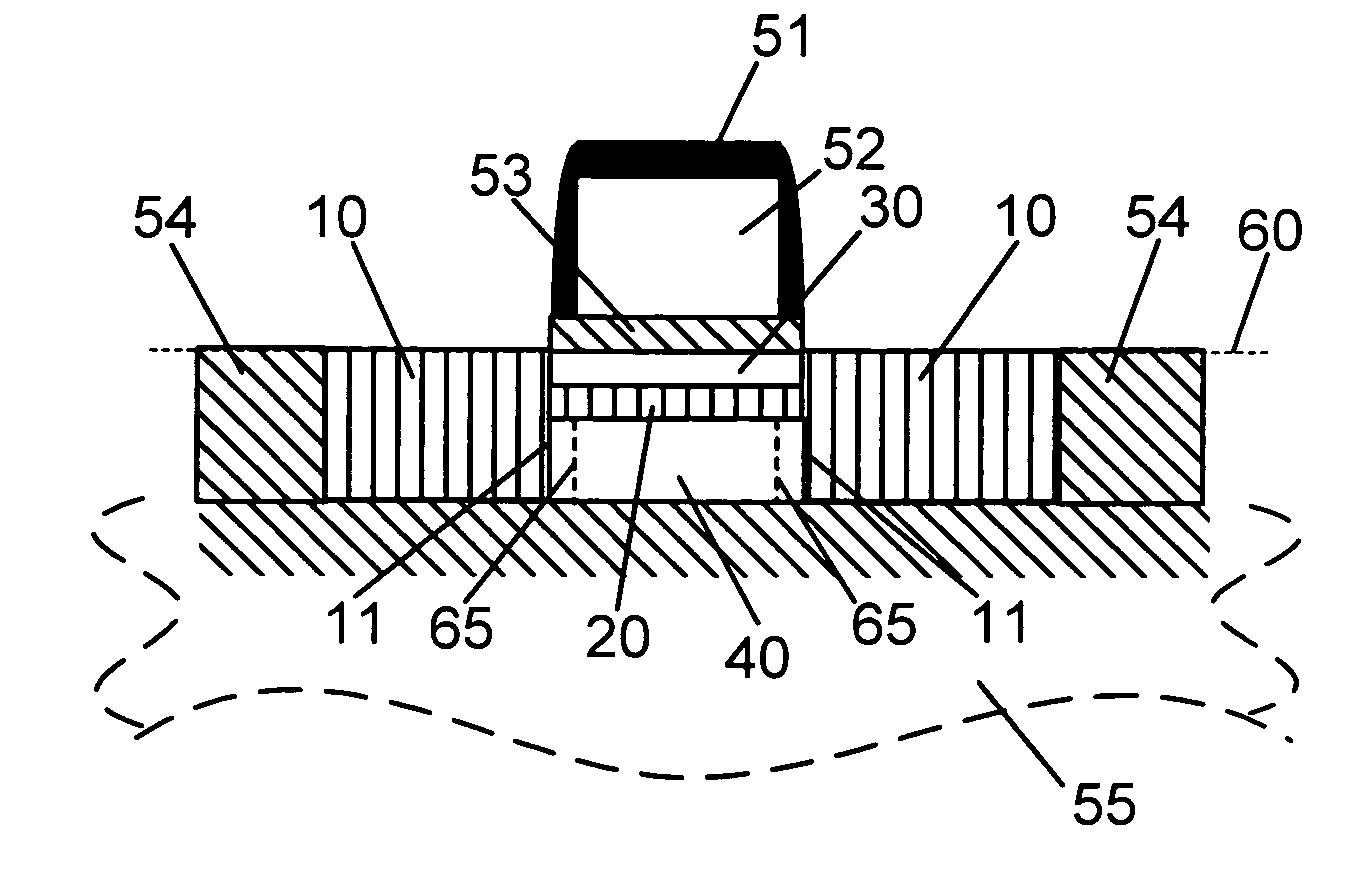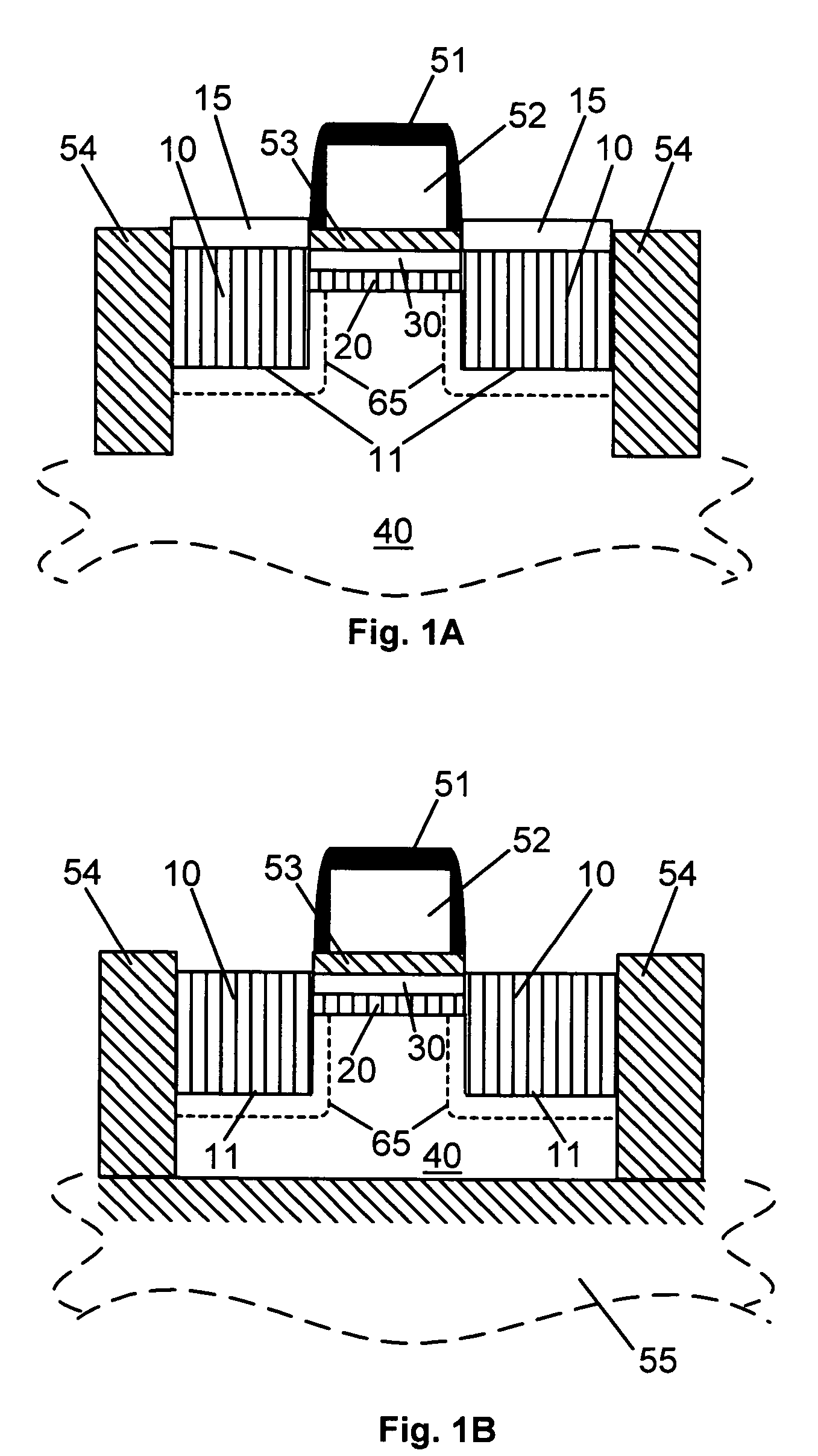High mobility heterojunction complementary field effect transistors and methods thereof
a complementary field effect and heterojunction technology, applied in the field of high mobility heterojunction complementary field effect transistors and field effect devices, can solve the problems of increasing complexity of technology, increasing the difficulty of silicon mos scaling, and traditional techniques failing to reduce certain undesirable physical effects
- Summary
- Abstract
- Description
- Claims
- Application Information
AI Technical Summary
Benefits of technology
Problems solved by technology
Method used
Image
Examples
Embodiment Construction
[0017]FIG. 1 schematically shows exemplary embodiments of a Si based heterojunction source / drain field device. Each embodiment contains the feature of the source 10 and drain 10 of the field effect device (FET) forming a heterojunction with the body 40 of the device. As every FET, the device has (at least one) gate 52. The conductive gate 52 in state of the art technologies is protected by a cover layer 51, which in Si based technologies is typically oxide and SiN. The gate 52 is electrically isolated from the rest of the device by the gate dielectric 53. The common property of FET-s is that the gate 52, by capacitive coupling across the gate insulator 53, controls the flow of the device current between the source 10 and drain 10. Insulator regions 54 serve for isolating the device. Typically the isolation is accomplished by shallow trenches 54, usually made of SiO2, as shown in the figures.
[0018]The material of the structure shown on FIG. 1 belongs in the broad category of Si based...
PUM
 Login to View More
Login to View More Abstract
Description
Claims
Application Information
 Login to View More
Login to View More - R&D
- Intellectual Property
- Life Sciences
- Materials
- Tech Scout
- Unparalleled Data Quality
- Higher Quality Content
- 60% Fewer Hallucinations
Browse by: Latest US Patents, China's latest patents, Technical Efficacy Thesaurus, Application Domain, Technology Topic, Popular Technical Reports.
© 2025 PatSnap. All rights reserved.Legal|Privacy policy|Modern Slavery Act Transparency Statement|Sitemap|About US| Contact US: help@patsnap.com



